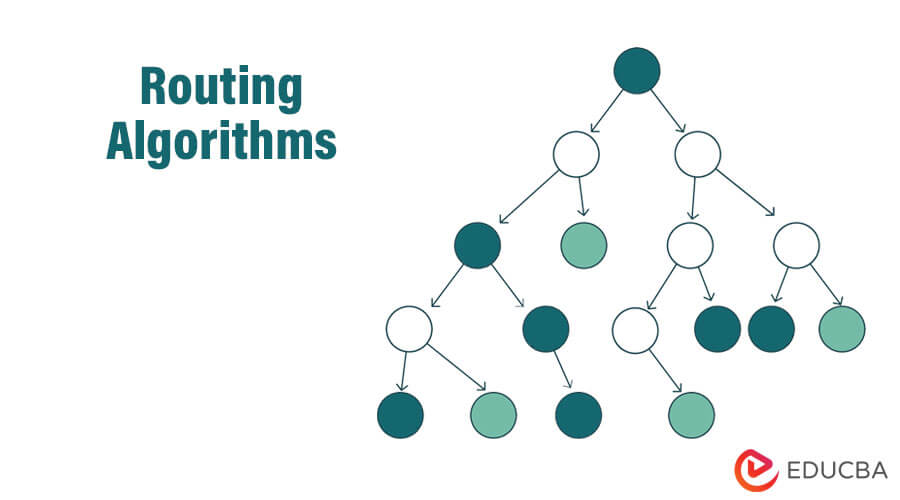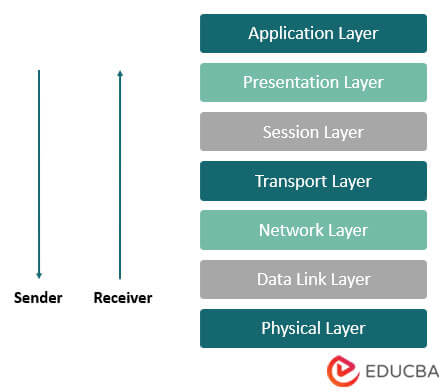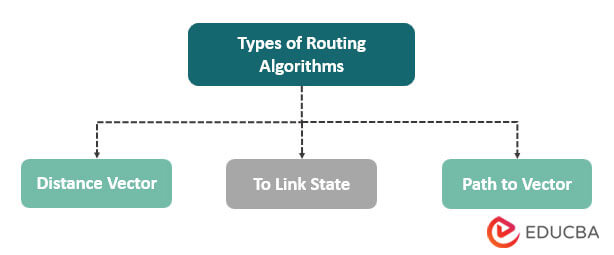Updated August 19, 2023
Overview of Routing Algorithms
In today’s world, the optimization of anything to the fullest is essential. We see that if we are optimizing full strength, we are improving, which defines how efficient we are to implement these things. When it comes to networking, we have a different type of network. We have different types of hardware in the network like a router, gateway, switches, firewalls, bridges, etc.
As you know, hardware doesn’t have logic; we need to add some code to work. For communicating with these different networking devices over the network, routers maintain routing tables. This is nothing but some memory allocated with these devices to store data regarding the best path from source to destination.
Before actually starting with the routing algorithm, let’s try to understand what is the router. The router is a device used to connect with the internet. It is a device that is used to transfer data packets over the computer network. The router generally does two things one is data packet forwarding, and the next is routing.
What is an algorithm?
- In the computer world, any process is described step by step. With limited steps is known as an algorithm.
- IP-Addressing: IP address is the address in the virtual world. Every address on the network has unique identification no. Every data packet holds this unique address to transmit data to the correct destination. Every device has a unique IP address.
- The IP address itself is a separate topic. Currently, we will stick to the routing algorithms. If you want to learn more regarding the IP address, then you can find a lot of material online.
- Routing algorithm: Similarly, the routing algorithm is a step-by-step process that describes how to transfer data over the network.
What are Routing Algorithms?
This algorithm specifies how to transfer data packets over the computer network from source to destination. Here router maintains the routing table.
Understanding
- Have you heard about the network layer in the OSI Model? OSI stands for Open Systems Interconnection (OSI) model.
- Please refer to the following diagram of the OSI model:
- Routing resides on the network layer of the OSI Model. The network layer is the third layer of the OSI model.
- At this layer, routing comes into the picture.
- It specifies the network’s best path to send data packets over the network from source to destination.
Explain Routing Algorithms
There are several properties of it, such as:
- Correctness
- Simplicity
- Robustness
- Stability
- Fairness
- Efficiency
These are grouped into two main categories.
- Non-Adaptive routing Algorithms: Non-adaptive algorithm does not match the new route once they decide their route. This kind of routing is also called static routing.
This kind of routing further get divided as below:
- Flooding: For this kind of routing, no network is required. This kind of routing allows incoming packets to retransmit on every link. Each and every packet is numbered uniquely so that duplicate packets can be discarded easily. Nodes can remember the packets, so by this, network traffic gets balanced. Flooding is a non-adaptive algorithm, so every node is visited. All the possible routes are getting checked. We can say that flooding is the simplest form of packet forwarding.
- Random walk: As the name suggests, it sent node by node over the link.
- Adaptive routing algorithm: This kind of algorithm tends to change its routing decisions based on network topology or traffic load changes. The adaptive algorithm is also known as a dynamic routing algorithm.
Types
The three main types are as follows:
1. Distance Vector (distance-vector routing): Routers generally get data from the routing table. Every neighboring router gets the information updated from their routing table in a specific time interval.
Suppose the router gets a better route than the previous one when they update their routing table anytime. This decision is taken every time based upon no hopes, packet queue length, and time delay.
For Example. The distance vector routing table is as shown below:
| Network ID | COST | Next Hop |
| ——— | ———————— | —————- |
| ——— | ———————– | —————- |
2. To link-state (link-state routing): Link step routing has the following steps
- Link state routing discovers nodes and search for their address, and saves them.
- It measures the delay in two neighbored nodes.
- It forms the packet which consumes all this information.
- It finally calculates the shortest path to get the best route.
- This kind of packets uses selecting flooding.
- Duplication is getting avoided by identifying with unique no.
- This algorithm is mostly used for a bigger environment where changes are not so frequent.
3. Path to vector (path-vector routing): This routine is useful for interdomain routing. It works as a protocol that stores updated information.
How Does it work?
Let us discuss how it works.
- The routing algorithm works to improve the quality of the network. With the help of the algorithm, we can decide which route is best suited for the network.
- This works on certain protocols. We can also say that it is a formula to apply on the route.
- There are different ways to calculate a route with the use of different algorithms. According to the type of network and use, every algorithm is getting applied.
What is the need for Routing Algorithms?
Know why they are needed.
- Routing is important to connect different systems to each other. So we can communicate with this over the network. And this forms the internet. Identifying each device, its presence and structure, and send packets are the responsibilities of the router. With that, security comes into the picture.
- We need data over the network in a fraction of seconds. We need to transfer data securely over the network. The quality of data packets needs to be maintained. All this work is done by algorithms written in the routers table. This ensures that the data will be passed over the network as per requirement. The routing algorithm is the most crucial part.
Conclusion
They are the key concepts of networking. If you are willing to pursue a career in networking, you should know all the routing algorithms and how to implement them.
Recommended Articles
This has been a guide to Routing Algorithms. Here we discuss the overview, working, types, and need of the Routing Algorithm, respectively. You can also go through our other suggested articles to learn more –




